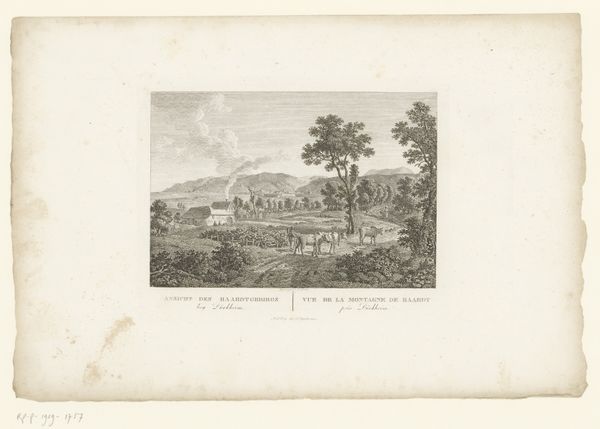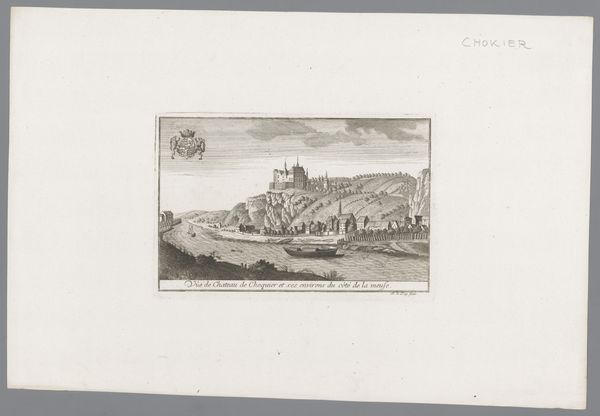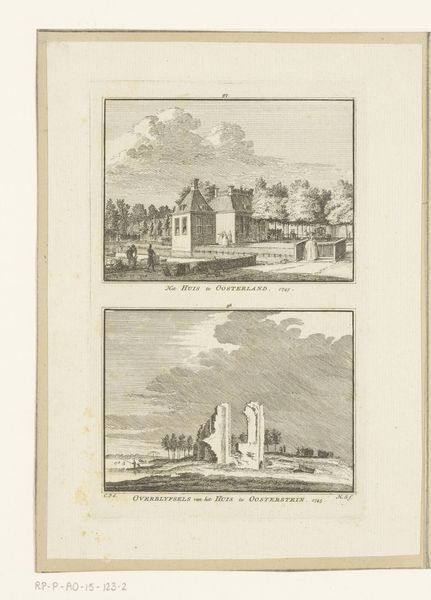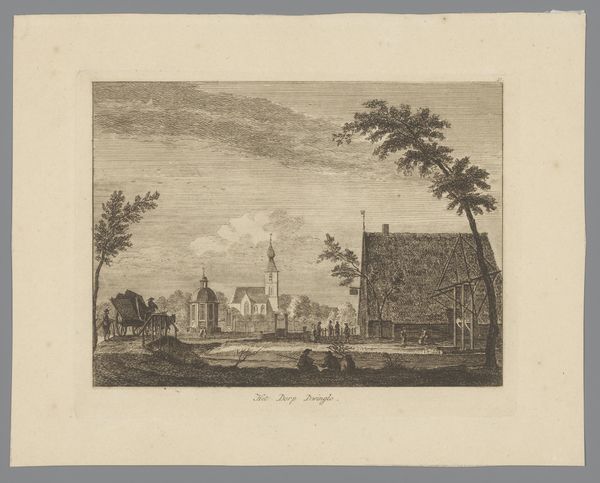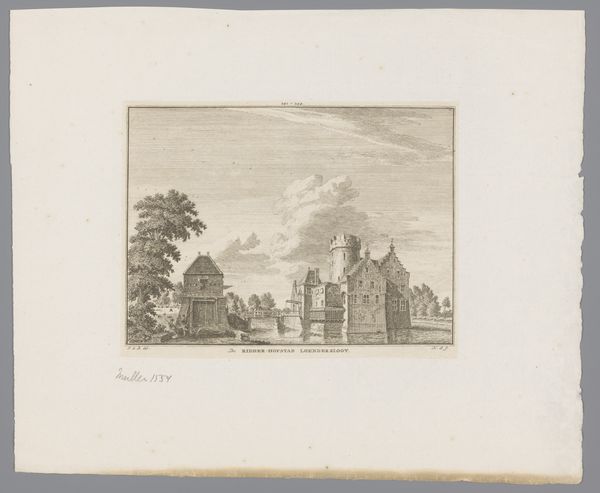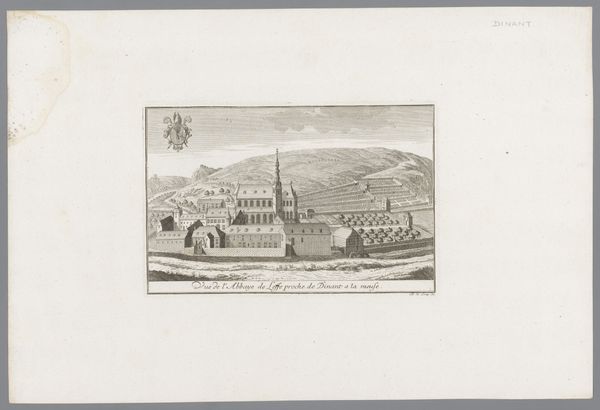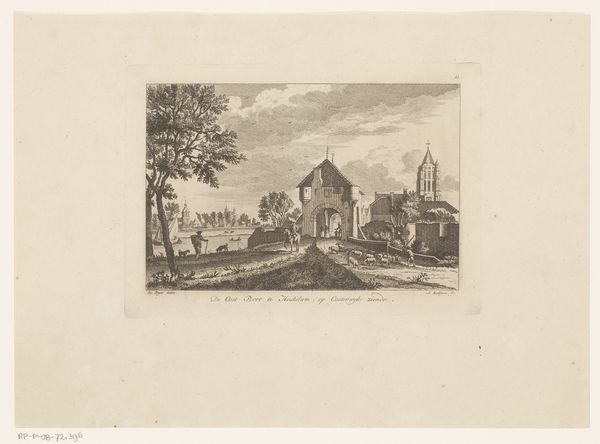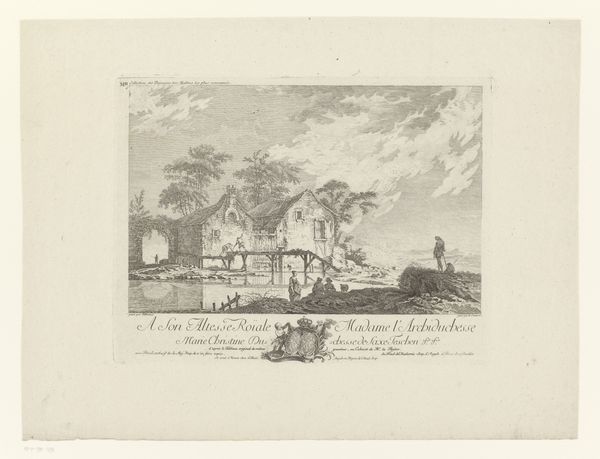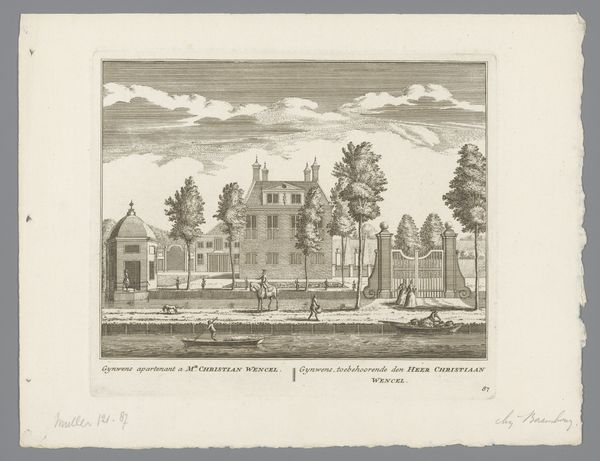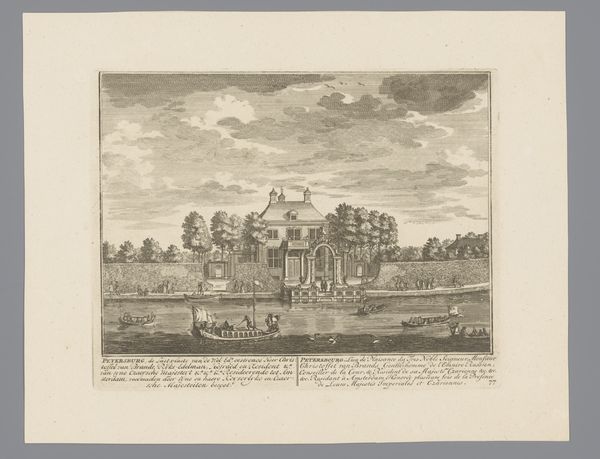
drawing, print, etching, paper, engraving, architecture
#
drawing
# print
#
etching
#
landscape
#
house
#
paper
#
cityscape
#
engraving
#
architecture
Dimensions: height 151 mm, width 210 mm
Copyright: Rijks Museum: Open Domain
Hendrik Spilman created this etching of the House Poelenburg near Heemskerk in 1721. The image is dominated by the motif of the ruined castle, a symbol laden with historical and cultural significance. Castles, in their prime, represent power, security, and the established order. Yet, here, we see it in decay. This ruin motif is not unique; we find echoes in Piranesi's etchings of Roman ruins or even in the Romantic landscapes of Caspar David Friedrich. The crumbling stone speaks to the transience of human achievement and the inevitable decay of all things. The psychological resonance of ruins is profound. They evoke a sense of nostalgia, loss, and the passing of time. This emotional engagement allows viewers to contemplate their mortality and the ephemeral nature of their endeavors. The motif of the ruined castle persists, evolving from symbols of fallen empires to romantic emblems of nature's triumph over human creation. It is a potent reminder of the cyclical nature of history, perpetually resurfacing in our collective consciousness.
Comments
No comments
Be the first to comment and join the conversation on the ultimate creative platform.
